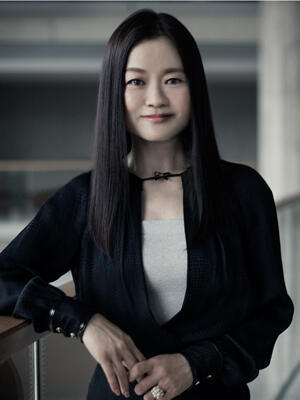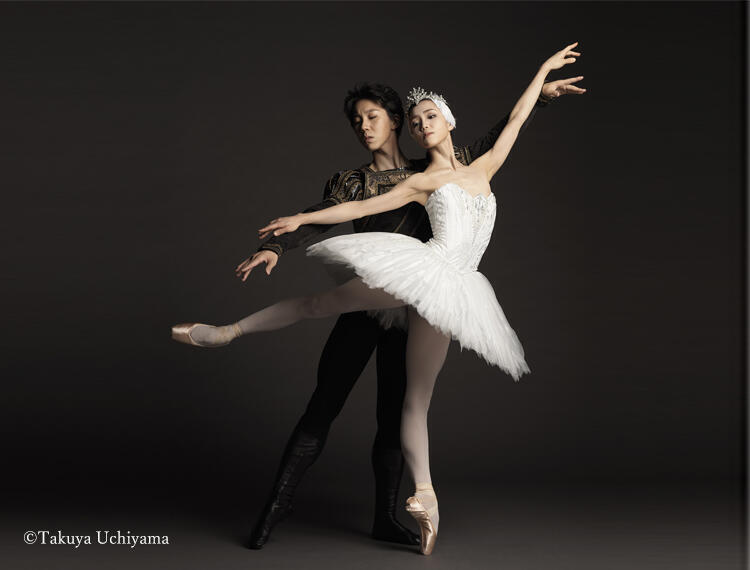Interview:Artistic Director YOSHIDA Miyako looks back on her first season
The 2020/2021 season, the first season led by Yoshida Miyako, Artistic Director of Ballet & Dance, is drawing to a close.
The COVID-19 pandemic has had a significant impact on people all across the world, and it has also been a challenging year for the New National Theatre, Tokyo(NNTT). They have continued to bring performances to the stage, overcoming many hurdles such as cancellations and alterations of planned performances, and live streaming with no audience.
At the same time, this season has seen many new initiatives in terms of daily rehearsals, training, and healthcare, and the National Ballet of Japan is expected to evolve even further.
Her second season begins with Sir Peter Wright's version of Swan Lake. Looking back on 2020/2021, Yoshida shares her thoughts on the new season.
- New initiatives at NNTT
 ―Your first season as Artistic Director is about to end. It must have been full of unexpected events, but could you please share your frank thoughts with us, looking back on your first year as Artistic Director?
―Your first season as Artistic Director is about to end. It must have been full of unexpected events, but could you please share your frank thoughts with us, looking back on your first year as Artistic Director?
My job as Artistic Director requires lots of decision making. Sometimes you need to look ahead and consider the long-term perspective, and sometimes you just need to make a decision in the moment. It's all about decisions. Since I had been dancing for such a long time, sometimes I can't help but feel like I'm their fellow dancer. However, I have to say harsh things to our dancers when necessary, so I need to maintain a certain distance from them. This kind of thing actually reminds me of directors at the Royal Ballet and makes me realise that there are so many aspects I didn't even notice when I was dancing there.
―Sadly, Coppélia was cancelled in May, but it was live-streamed instead, with no audience. It was a ground-breaking idea to live-stream all the planned performances with four different casts.
It was all thanks to the directors and staff who did their best to make it happen. I was so relieved our dancers' efforts finally paid off. Of course, it was difficult to dance in front of an empty auditorium ーbut it was so encouraging for our dancers to know that 167,000 people watched the live stream, which made me very happy as well. Some people watched us from abroad, and there were people who were watching ballet for the very first time. Also, this live stream allowed the viewers to compare different casts, and I'm sure they found it interesting to see how different the same piece could look depending on the cast. We would like to apply what we've learnt from this experience in the future.

Coppélia
―In Coppélia, some artists made their solo debut, and the combination of principal couples was also switched around. In Sleeping Beauty in February, I remember there was a performance where all the fairies were making their debut in the roles.
We did an audition within the company for the role of the fairies, which allowed us to discover a different side to our dancers that we hadn't seen before. In terms of principal couples, I am very keen to try new combinations of dancers. I must admit it's difficult to shuffle couples especially when the choreography requires very advanced partnering techniques, but I would like to see a variety of partnerships and try out new casts, keeping in mind the characteristics of each ballet.
―When you became Artistic Director, you mentioned that you would like to improve the working environment and healthcare for the dancers. Please share some of the initiatives currently taking place at NNTT.
Various things are going on at the moment. We have just started collaborating with a fantastic doctor, and we are about to open a hotline with a university hospital. Because all the details of dancers' injuries are now digitally stored in the database (e.g. age, rank, the ballet they acquired the injury in, etc.) it's much easier to deal with injured dancers. We are also planning to have a seminar about dancers' bodies, bones and injuries just before the end of the season. I would like all our staff to attend the seminar because it covers things that even I didn't know!
We are also planning to invite doctors specialised in specific parts of the body (e.g. hip joints), about 4-5 times a year. I believe it is very important to learn about your own body, as it impacts on how you take care of it.
We've also completed the first session by a newly appointed trainer, where we focused on core strengthening. If your core is strong, you can use each part of your body more effectively ー your upper body will move more smoothly, and the lower body will be much stronger. I am concerned that our dancers are often tensing their whole body unnecessarily when moving, so I hope they can gradually change the way they use their body through training.
―We look forward to seeing the positive results of these initiatives soon.
We also had a makeup lesson in cooperation with Chacott (Japan's main dance fashion company). I did struggle with makeup myself when I was dancing, and I was a little concerned that our dancers' makeup is not enhancing their facial expressions. The ideal makeup should look natural, even with highlights or shadows, and it is also important to show their facial expressions clearly. In other countries, dancers are turning toward natural makeup, which allows each dancer's personality to shine through. I hope that at NNTT we can implement this kind of stage makeup, catered for Japanese dancers, and that others might follow our lead.
As for performances, we are getting back to the basics, and I've kept reminding our dancers of the importance of this. In terms of acting, for example, dancers seemed puzzled when I said "French style" during the rehearsal of Coppélia. I suggested watching French films where you can see French people in everyday life. The ballet includes gestures and manners that Japanese people are not too familiar with, so it often looks very unnatural when they overdo it. I would like to encourage them to do more research and think things through before performing.
In that sense, Swan Lake by Sir Peter Wright is very logical and the relationship between the characters is very clear. I believe this helps dancers to understand the character's background or the relationship between characters, so hopefully they will find it easier to perform the role more naturally.
- Peter Wright's Swan Lake: bringing the richness of drama like Shakespeare
―Your second season as Artistic Director begins with Sir Peter Wright's Swan Lake.

Swan Lake
Peter once told me that he used to have problems with the character he was dancing in Swan Lake, as he felt it was not quite connected to the story. In his version, the story is very logical. It starts with the funeral of the king, and that is why the prince must choose his bride urgently to ascend the throne. In his ballet and choreography, the storyline is very clear, and I believe that makes a huge difference for dancers when they perform on stage.
It is said that before the premiere of Swan Lake in 1981, the dancers were very surprised by the volume and weight of the costumes when they tried them on for the first time, and didn't think they would be able to dance in them. Once they got used to the costumes, however, the stage apparently looked incredibly rich and beautiful. Much like Medieval clothing, the stage design and costumes are both rather heavy, but they actually complement the dancers' movements and create the interesting performances that Peter intended. I hope we will be able to create a rich stage, reminiscent of Shakespearean plays. I believe this ballet will elevate us as a company and help people to see us as a fresh, new company.
―In the new season, the company will also perform Vertiginous Thrill of Exactitude by William Forsythe for the first time.
Forsythe's work is very challenging. I would like our dancers to master how to move and release their body as he intended. It's not something that just anyone can do, but Forsythe's work enables you to feel a true sense of liberation and see a different world when you truly challenge yourself with his choreography. Dancing Forsythe's work requires highly advanced body control, so I hope the dancers can show what they've achieved through their training.
I feel that everything I've experienced in my career has contributed and led me to the work I am doing now as Artistic Director. For me, what I need to do is very clear: I come up with endless ideas, which makes my job very challenging and worthwhile. All I can do in the next season is focus on delivering excellent performances. It is our mission, after all, to deliver arts when people are going through difficult times.
(Interview by MORIYAMA Mika)

